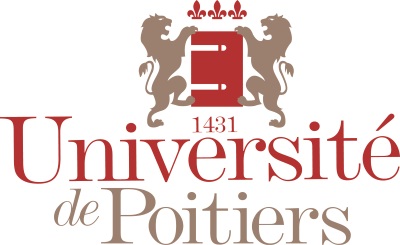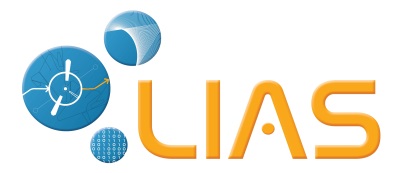Chairs: Elena Baralis (Politecnico di Torino, Italy), Tania Cerquitelli (Politecnico di Torino, Italy), Pietro Michiardi (EURECOM, France)
Website: http://dbdmg.polito.it/bigdap2015/
BigDap 2015 is a workshop aimed at promoting and sharing research and innovation on Big Data. The workshop will allow researchers and practitioners to share their experiences on designing and developing big data applications, to discuss the big data open issues and to share new ideas and techniques for big data management and analysis.
Researchers are encouraged to submit their papers describing systems, platforms, algorithms and applications addressing all facets of a Big Data application. Industrial implementations of Big Data applications, design and deployment experience reports on various issues raising in Big Data Projects are particularly welcome. We call for research and experience papers as well as demonstration proposals covering any aspect of Big Data, with specific interests on Big Data analytics.
BIGDAP 2015 will be sponsored by FP7 ONTIC project (Online Network TraffIc Characterization, http://ict-ontic.eu) that is funded by European Commission. Therefore, the application of scalable Big Data analytics to network traffic characterization will be a key topic in the workshop. However, all application domains (e.g., smart cities, e-commerce, social networks) that need to deal with a large volume of data are of workshop interest.
Chairs: Ajantha Dahanayake (Prince Sultan University, Saudi Arabia), Bernhard Thalheim (Christian Albrechts University, Germany)
Website: http://www.is.informatik.uni-kiel.de/en/is/events/dcsa2015adbis/
Nowadays, smart applications are gaining a lot of attention from academics and industry. Massive data collections and the usage of that data brings in the development of smart applications as the key process for improving the efficiency, reliability, and security of a traditional application. The concept of smart applications includes various aspects such as environmental sustainability, social sustainability, regional competitiveness, natural resources management, cybersecurity, and quality of life improvement. With the deployment of networked smart devices and sensors, unprecedentedly large amount of sensory data can be collected and processed by advanced computing paradigms which are the enabling techniques for smart applications. For example, given historical environmental, population and economic information, salient modeling and analytics are needed to simulate the impact of potential application development strategies, which will be critical for intelligent decision making. Analytics are also indispensable for discovering the underlying structure from retrieved data in order to design the optimal policies for real time automatic control in the cyberphysical smart system. Furthermore, uncertainties and security concerns in the data collected from heterogeneous resources aggravate the problem, which makes smart planning, operation, monitoring and control highly challenging.
Chairs: Witold Andrzejewski (Poznan University of Technology, Poland), Krzysztof Kaczmarski (Warsaw University of Technology, Poland), Tobias Lauer (Offenburg University of Applied Sciences, Germany)
Website: http://gid.us.to/
Many application domains of computer science, including: astrophysics, molecular dynamics, quantum chemistry, image processing, financial simulation, computer tomography, structural biology as well as many other require a lot of computing power. Fortunately, in most cases it is possible to parallelize parts of algorithms used to solve the problems in the aforementioned domains. However, even if parallelized, many of these algorithms require powerful and expensive hardware capable of running many parallel communicating and cooperating threads.
Recently however, the scientific community has realized, that Graphics Processing Units (GPUs) of modern graphics cards have similar capabilities. GPUs turned out to be very powerful (and cheap) computing hardware that may be used in all kinds of computation (not related to computer graphics). Since then, it has been shown many times over, that by utilizing the GPUs we are able to improve the computing efficiency in many computer science application domains and achieve speedups of 20-100X. However, while other fields of computer science already strongly benefit from utilizing GPUs, there is not yet much research related to using them in databases.
The concept of using GPUs in databases is relatively young and has not yet received enough attention from the database community. It is therefore necessary to popularize GPUs amongst the database scientific community and the best way to do that is to organize a workshop. Aside from popularizing the GPUs, our workshop will also provide a forum for discussion amongst the people interested in the subject. We think that organizing a workshop devoted to a relatively young field of computer science, which has the potential of allowing to achieve high speedups in many applications domains of databases is a very attractive idea.
Chairs: Selma Khouri (National Engineering School for Mechanics and Aerotechnics (ISAE-ENSMA), France and National High School of Computer Science (ESI), Algeria), Robert Wrembel (Poznan University of Technology, Poland)
Website: http://www.cs.put.poznan.pl/rwrembel/MEBIS2015.html
Nowadays, a business intelligence (BI) technology is a worldwide accepted and obligatory component of information systems deployed in companies and institutions. From a technological point of view, BI includes a few layers. The first one is an ETL layer whose goal is to integrate data coming from heterogeneous, distributed, and autonomous data sources, which include operational databases and other storage systems. The integrated data are stored in a central database, called a data warehouse (DW), located in the second layer. Based on the central DW, smaller thematically-oriented data warehouses can be build. They are called data marts (DM). Data stored in a DW or DM are analyzed by multiple applications, located in the third layer.
An inherent feature of the data sources that fed the BI architecture with data is that in practice they evolve in time independently of the BI architecture. The evolution of the data sources can be characterized by content changes, i.e., insert/update/delete data, and schema changes, i.e., add/modify/drop a data structure or its property. Handling content changes at a DW can be implemented by means of: (1) temporal extensions, (2) materialized views, and (3) data versioning mechanisms.
The propagation of structural changes into the BI architecture is much more challenging as it requires modifications in all the layers in this architecture, forcing the layers to evolve. Three basic approaches to handling the evolution of data warehouses were proposed by research communities. These approaches are classified as: (1) schema evolution, (2) schema versioning, and (3) data warehouse versioning. Even though a decent contribution was made in this research area, there still exist multiple open research and technological problems, like querying heterogeneous DW versions, efficient indexing multiversion data, integrity constraints for mutliversion DW schemas, modeling multiversion DWs.
To the best of our knowledge, no solutions were proposed so far to support the evolution of the ETL layer and the analytical applications layer.
We observe that the research on evolving BI systems is still very active. Recently R. Kimball proposed the extension to its SCD concept, extending it with SCD type 4 to 7. The international research conferences and journals publish papers on evolving BI systems, e.g., DaWaK 2014, EDA 2014, EDA 2015, TIME 2014, Information Systems 2015.
Handling multiple and evolving states of some entities is a more general problem. An intensive research is conducted also in the areas of versioning XML documents and versioning ontologies. Last but not least, some NoSQL storage systems support versioning of data, e.g., HBase, Cassandra.
Chairs: Ladjel Bellatreche (LIAS/ISAE-ENSMA, France), Yamine Ait Ameur (IRIT-ENSEIHT, France)
Website: http://oais2015.ensma.fr/
Information Systems are record sensitive and crucial data to support day-to-day company applications and decision making processes. Therefore, these systems often contain most of company product and process knowledge. Unfortunately, this knowledge is implicitly encoded within the semantics of the modelling languages used by the companies. The explicit semantics is usually not recorded in such models of information systems. References to ontologies could be considered as an added value for handling the explicit semantics carried by the concepts, data and instances of models Thus, developing new user Interfaces or reconciling data and/or models with external ones often require some kind of reverse engineering processes for making data semantic explicit.
Nowadays, ontologies are used for making explicit the meaning of information in several research and application domains. Ontologies are now used in a large spectrum of fields such as: Semantic Web, information integration, database design, e-Business, data warehousing, data mining, system interoperability, formal verification. They are also used to provide information system user knowledge-level interfaces. Over the last five year, a number of interactions between ontologies and information systems have emerged. New methods have been proposed to embed within database both ontologies and data, defining new ontology-based database. New languages were developed in order to facilitate exchange both ontology and data. Other languages dedicated for querying data at the ontological level were proposed (e.g., RQL, SOQA-QL, or OntOQL). Various approaches have been designed to deal with semantic integration of heterogeneous information sources and system interoperability using ontologies either in data sources or in mediators. In some domains, like products modelling, ontologies were published as standards. These ontologies are actually used to define worldwide exchange consortiums for sharing information in various application domains. Due to these recent developments, most commercial database systems offer solution to both manage ontologies and data.
The objective of our workshop is to capitalize this effort. The aim of OAIS is twofold. The first one is to present new and challenging issues in the contribution of ontologies for designing high quality information systems. The second one is to present new research and technological developments that use ontologies all over the life cycle of information systems.
Chairs: Béatrice Bouchou Markhoff (LI, University François Rabelais de Tours, France), Stéphane Jean (LIAS/ISAE-ENSMA and University of Poitiers, France)
Website: http://sw4ch2015.ensma.fr
Nowadays, Cultural Heritage is gaining a lot of attention from academic and industry perspectives. Scientific researchers, organizations, associations, schools are looking for relevant technologies for accessing, integrating, sharing, annotating, visualizing, analyzing the mine of cultural collections by considering profiles and preferences of end users.
Most cultural information systems today process data based on the syntactic level without leveraging the rich semantic structures underlying the content. Moreover, they use multiple thesauri without a formal connection between them. This situation has been identified in the 90’s when the need to build a unique interface to access huge collection of data has appeared. During the last decades, Semantic Web solutions have been proposed to explicit the semantic of data sources and make their content machine understandable and interoperable. By analyzing the most important conferences and workshops related to the Semantic Web, four main categories of topics have been identified: (i) the development of Ontologies and vocabularies dedicated to the studied domain, (ii) explicitation of collection semantics, (iii) usage of Semantic Web Cultural Heritage and (iv) applications related to Cultural Heritage.
The aim of our SW4CH Workshop is to bring together Computer Scientists, and more precisely Data Scientists, involved in Semantic Web solutions for Cultural Heritage. The goal is to exchange experiences, build a state of the art of realizations and challenges and reuse and adapt solutions that have been proposed in other domains.
Chairs: Rémi Delmas (Onera, Toulouse, France), Thomas Polacsek (Onera, Toulouse, France), Florence Sèdes (IRIT, Toulouse, France)
Website: http://www.irit.fr/wisard2015/
The aim of this workshop is to gather researchers and practitioners working in the area of Information Systems, DataBase, Document management, metadata, workflow management, conceptual modeling, design, software, etc., to exchange and to share information, to network, to give points of view and to collaborate in project proposals.
This workshop will discuss questions about liveness, dynamicity, reactivity of alarm systems: how to ensure the warning information reach the right destination at the right moment and in the right location, still being relevant for the recipient, in spite of the various and successive filters of confidentiality, privacy, firewall policies, etc. ? Also relevant in this context are to technical contingency issues: material failure, defect of connection, break of channels, independence of information routes and sources? Alarms with crowd media, (mis-)information vs. rumours: how to make the distinction ?








